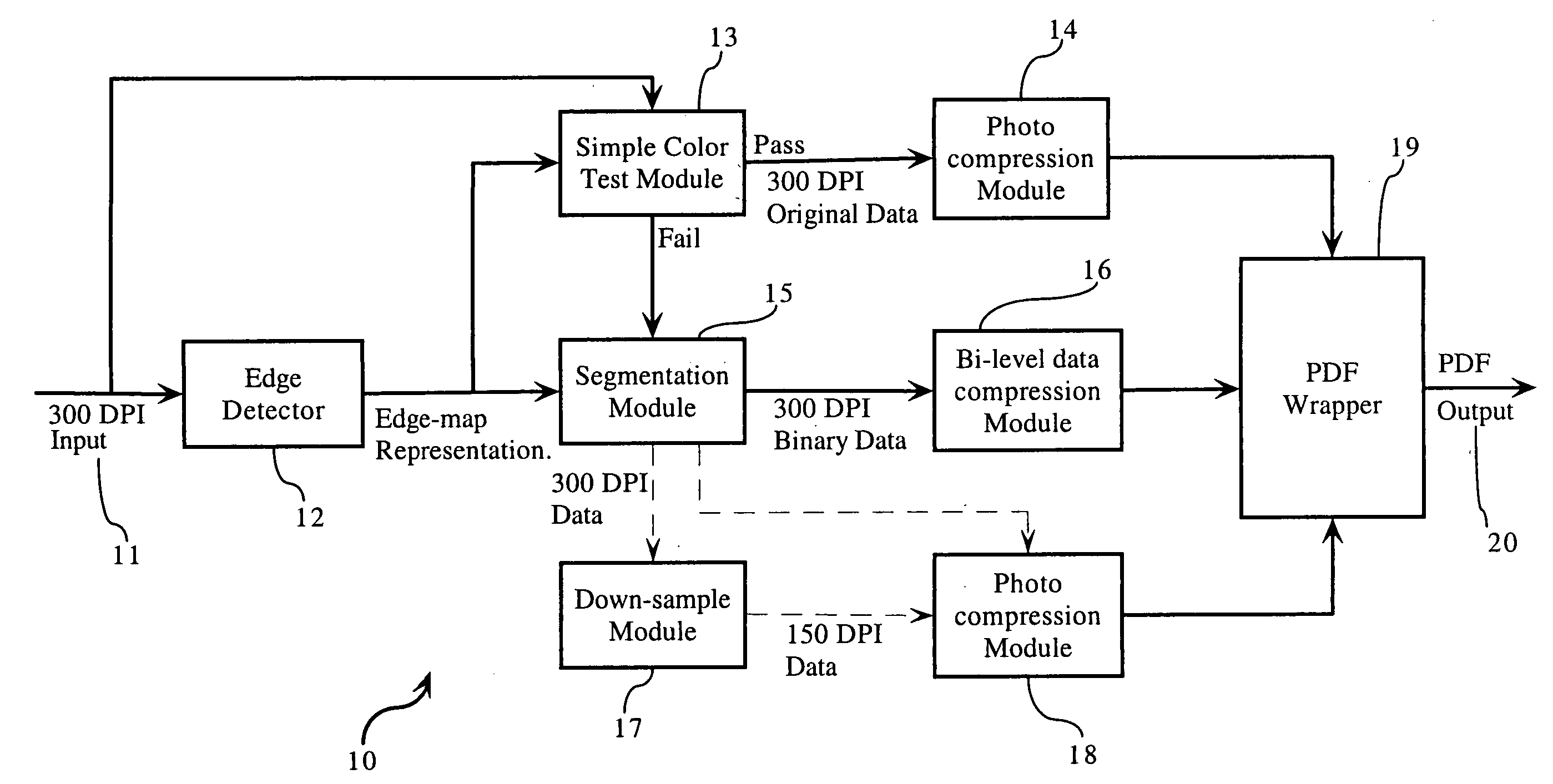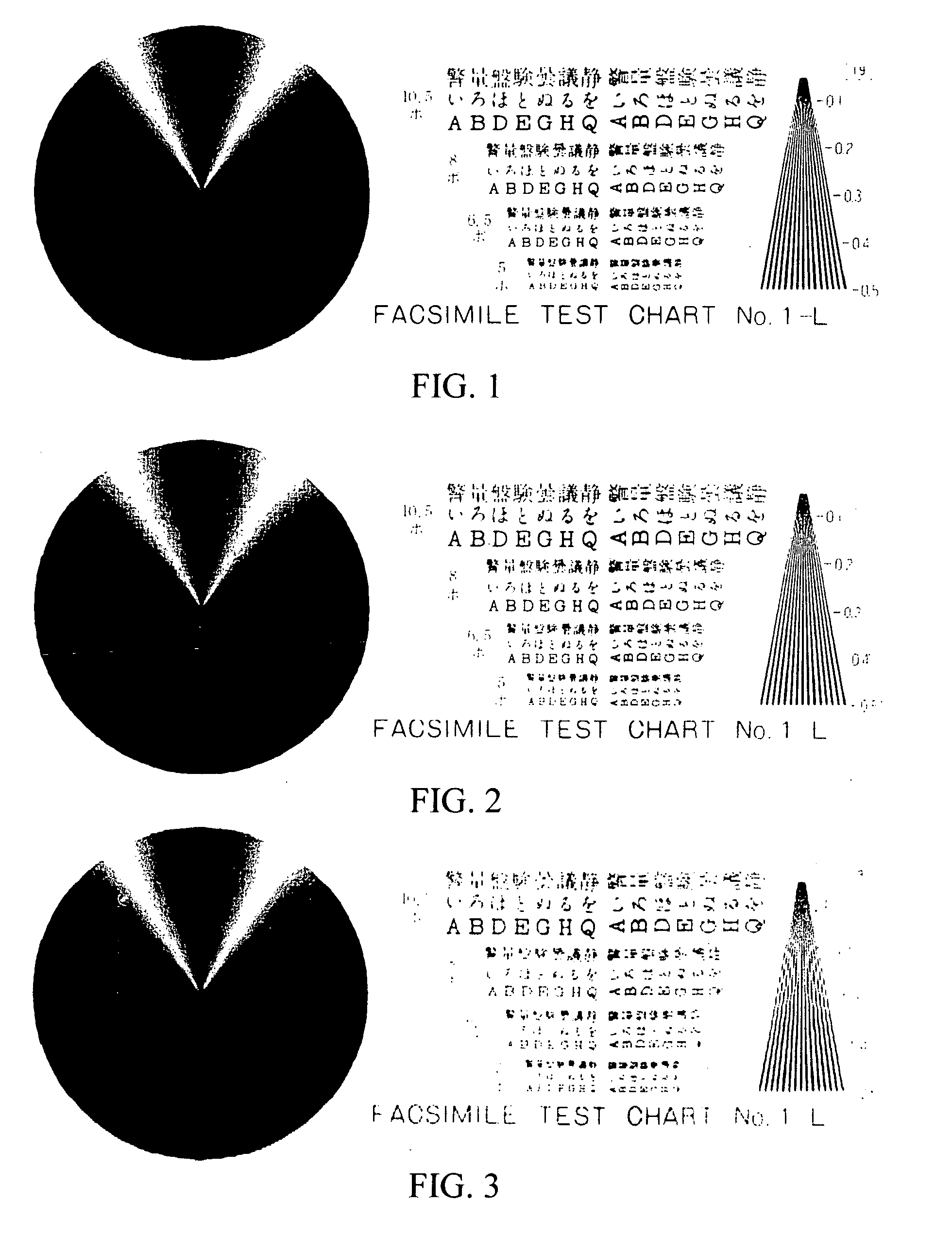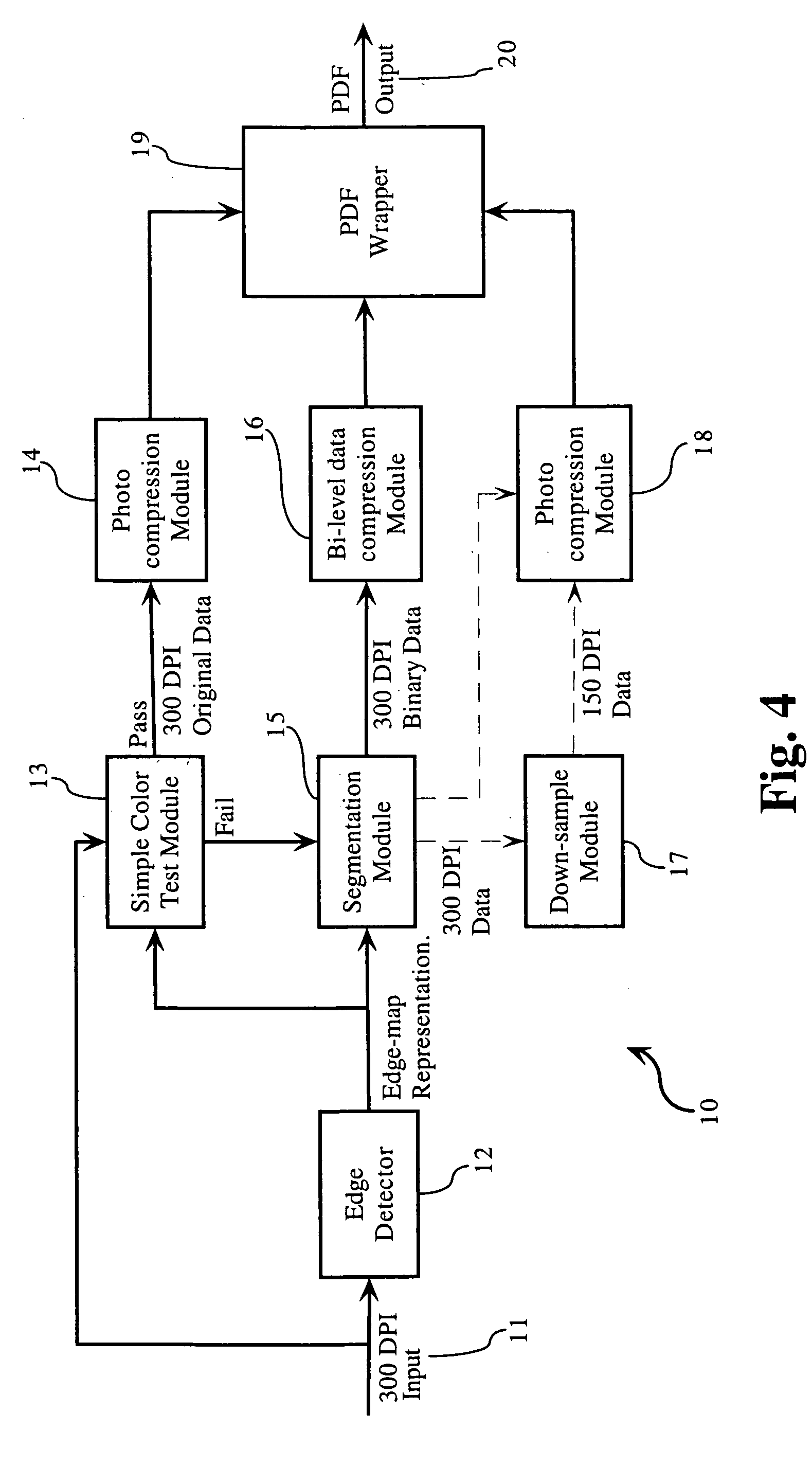Segmentation-based hybrid compression scheme for scanned documents
a hybrid compression and document technology, applied in the field of segmentation-based hybrid compression schemes for scanned documents, can solve the problems of not being able to achieve the effect of high compression ratio and high document quality
- Summary
- Abstract
- Description
- Claims
- Application Information
AI Technical Summary
Benefits of technology
Problems solved by technology
Method used
Image
Examples
Embodiment Construction
[0028]FIG. 4 is a block diagram illustrating a system 10 designed to perform a segmentation-based hybrid compression scheme according to embodiments of the invention. A digital representation 11, which in the illustrated embodiment is a 300 dpi, 24-bit depth RGB representation, is input to an edge detector 12. Input representation 11 is typically a scanned version of a document that may or may not have been previously generated on a computer. Alternatively, input representation 11 may be a computer-generated document that is directly retrieved by system 10. It should be noted that input representation 11 may be at a different resolution as well. 300 dpi is exemplary only.
[0029] Edge-based segmentation is an important feature of the algorithm of the present invention. To that end, edge detector 12 converts the 300 dpi, 24-bit depth RGB input representation 11 to (or generates therefrom) a grayscale representation. Edge detector 12 also performs Sobel filtering on the grayscale repre...
PUM
 Login to View More
Login to View More Abstract
Description
Claims
Application Information
 Login to View More
Login to View More - R&D
- Intellectual Property
- Life Sciences
- Materials
- Tech Scout
- Unparalleled Data Quality
- Higher Quality Content
- 60% Fewer Hallucinations
Browse by: Latest US Patents, China's latest patents, Technical Efficacy Thesaurus, Application Domain, Technology Topic, Popular Technical Reports.
© 2025 PatSnap. All rights reserved.Legal|Privacy policy|Modern Slavery Act Transparency Statement|Sitemap|About US| Contact US: help@patsnap.com



